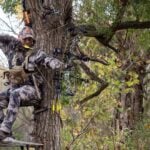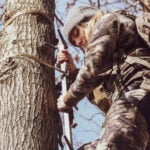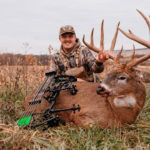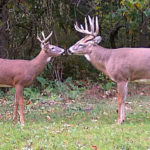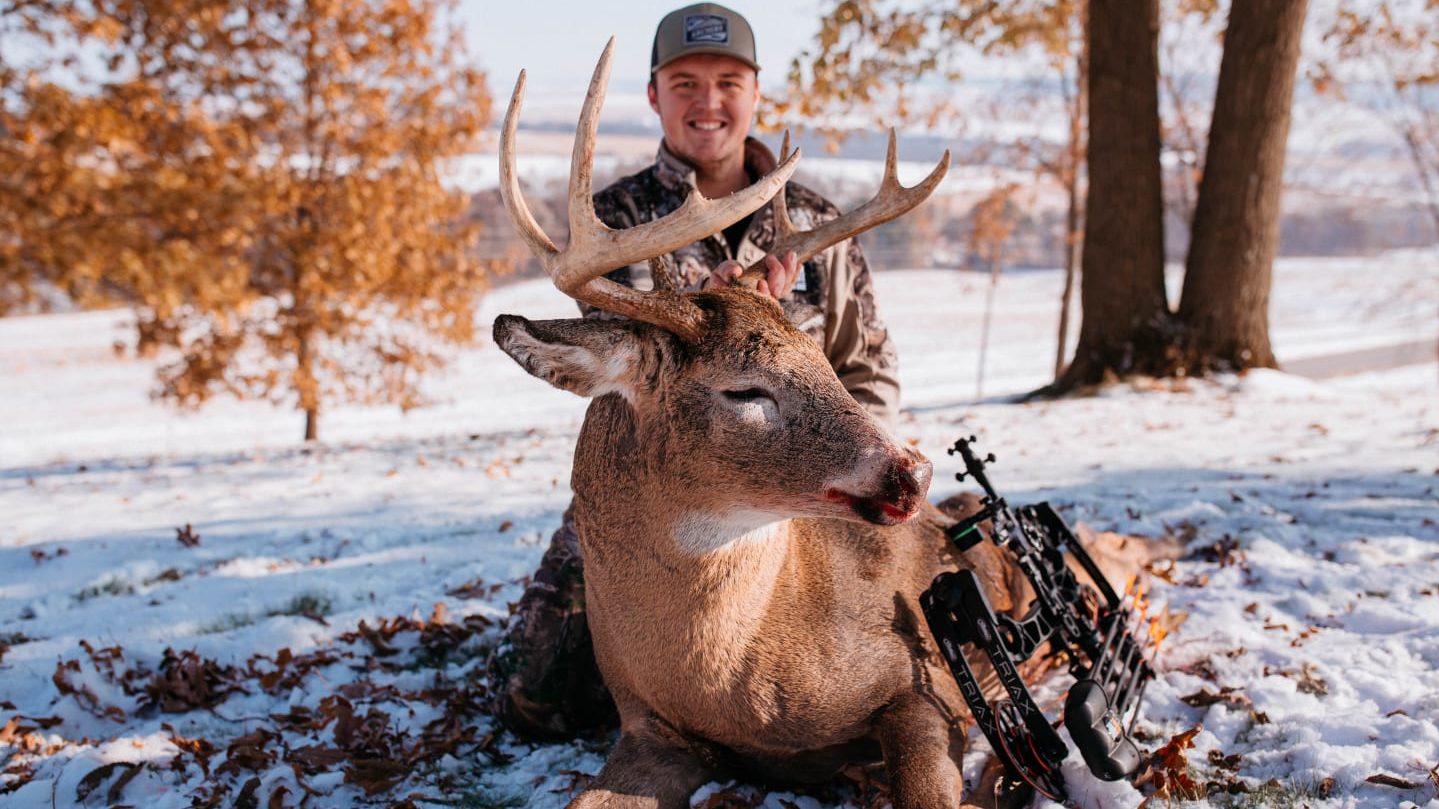
We all want the rut to last until the end of the season, to keep the excitement going as long as possible. For most deer hunters, the late season hunting is more like an experiment than a true hunt.
They dream that maybe this year it will be just as good as the rut, or heaven forbid, opening day. Maybe they will catch it just right.
But, those dreams don’t last long and they quickly relearn that there is nothing easy about the late season.
Most days, the hunting is slower than molasses at the same time of year. The bucks have been scouted, bowhunted, gun hunted, shot at, driven and generally run into the darkest corners of the county.
Now, it’s time to hunt them again. Oooh, the prospects don’t sound particularly good. Do you think the bucks are going to act the same way they did in early November? Forget it. By the late season, you are hunting an entirely different animal. It is a new game.
The late season is tough and most hunters get discouraged when they realize this, and then they give up before it actually gets good. Understanding the feeding habits of these late season deer is the key to hunting them effectively.
Everything the deer do in the late season revolves around one to two things: keeping their hide and filling their stomachs. They are all business.
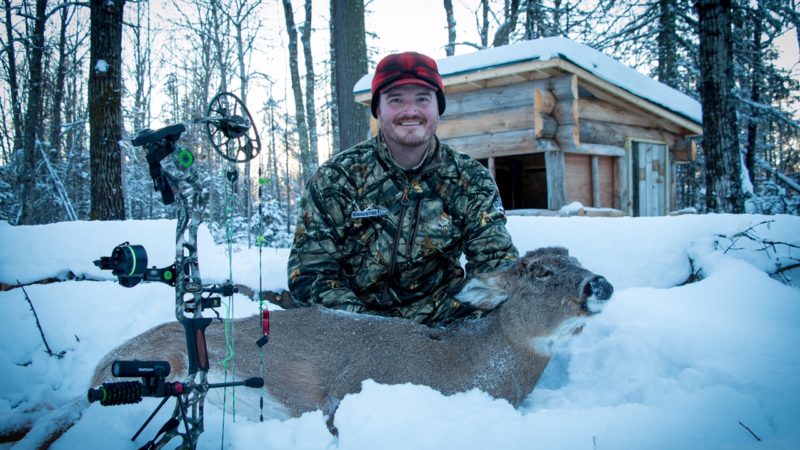
When the Late Season Gets Good
My friend Randy McPherren specializes in the late season. Randy told me that he loves it when he steps outside, takes a deep breath and his nose hairs freeze together.
He knows that with extreme cold the bucks will be under physical stress and will move to their food sources before dark. He waits all season for those few brutal days that most hunters look to avoid.
Randy is one of the most successful late season hunters that I know. He loves the cold lonely days of late December and January more than the rut.
I asked Randy if it was important to find places that had experienced limited hunting pressure during the regular firearms season in order to be successful during the late season. I was surprised when he said that it really didn’t seem to matter. All that is necessary is a few decent bucks that made it through the barrage, some food and brutal weather.
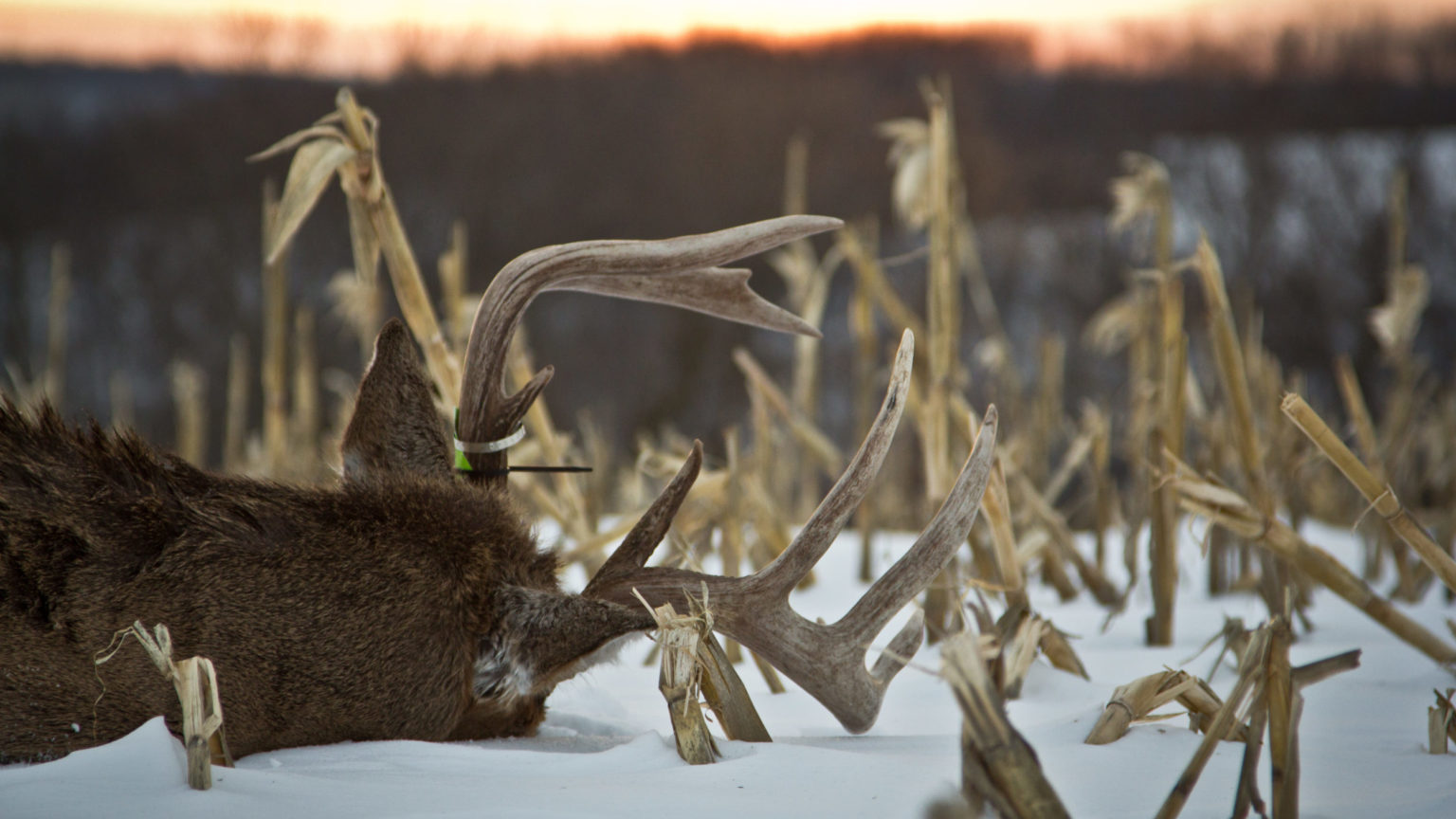
The Facts About Cold Weather Behavior
During periods of sustained cold, the deer will actually become less active. They may even stop feeding altogether for many days at a time.
This is when they live on their fat reserves. But this doesn’t happen immediately. It takes a period of several days, even weeks, to occur.
Leonard Lee Rue III was dedicated to understanding deer before it became a widely popular study. Rue was among the first to detail this physiological change.
He noted that the metabolic rate of most warm-blooded animals speeds up as the temperature drops in order to generate more heat. People also react to cold temperature in this way, requiring us to eat more food to stay warm.
Biologists discovered, to their surprise, that deer don’t respond to cold in this manner. Their metabolism drops when the temperature dips for extended periods. Deer won’t eat as much even if food is abundant because their bodies don’t burn as many calories.
Biologists discovered, to their surprise, that deer don’t respond to cold in this manner. Their metabolism drops when the temperature dips for extended periods. Deer won’t eat as much even if food is abundant because their bodies don’t burn as many calories.
Rue noted that when winter begins, deer haven’t yet made this adjustment (it is brought on by secretions from the endocrine glands) and therefore they must feed heavily when it gets cold in order to fuel their still high metabolism.
Studies done by R. Larry Marchinton and Karl Miller, with the University of Georgia, have noted that deer tend to move during the warmest parts of the day when the temperature is extremely cold. If you find that deer aren’t moving in the evening you may find better action at midday.
Marchinton and Miller also found that, during extreme cold, deer will move only if high-energy food sources (they cited corn and acorns as examples) are easily available. Otherwise, they will simply wait in protected areas until the weather changes.
Feeding Patterns
Obviously, the best opportunity comes in the form of the increased activity that occurs during a cold snap in early winter before the deer’s metabolism has slowed. I’ve seen bucks display uncharacteristic abandon when the mercury dips hard in late December and early January.
You can best take advantage of this activity by pre-scouting a few good food sources and being prepared to move into gear when the temperature drops.
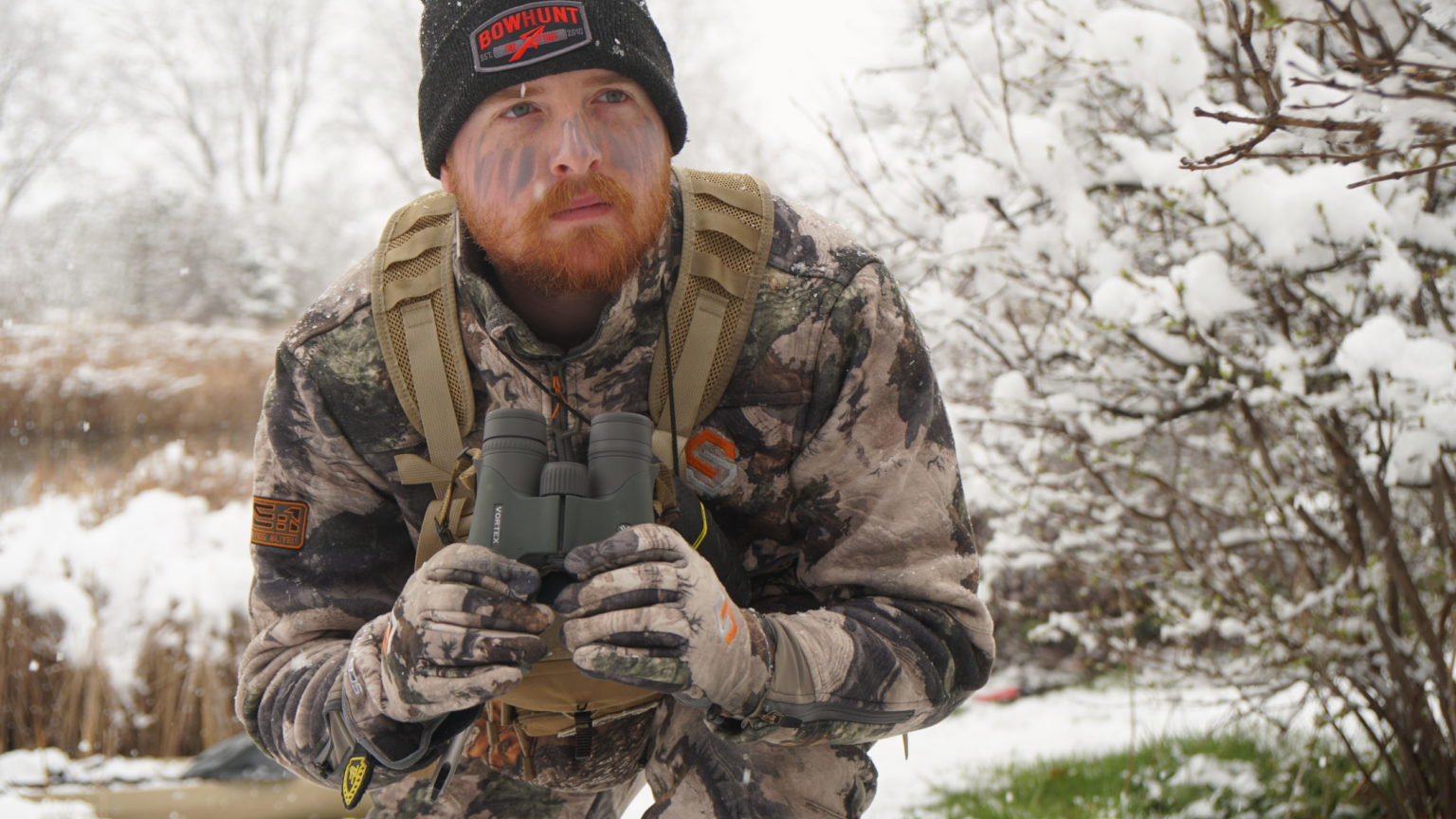
To conserve energy, deer bed close to their feeding areas when it is brutally cold. This compressed range makes them harder to hunt effectively.
The challenge, of course, is getting to an afternoon stand along the edge of a food source without deer that are bedded nearby seeing you.
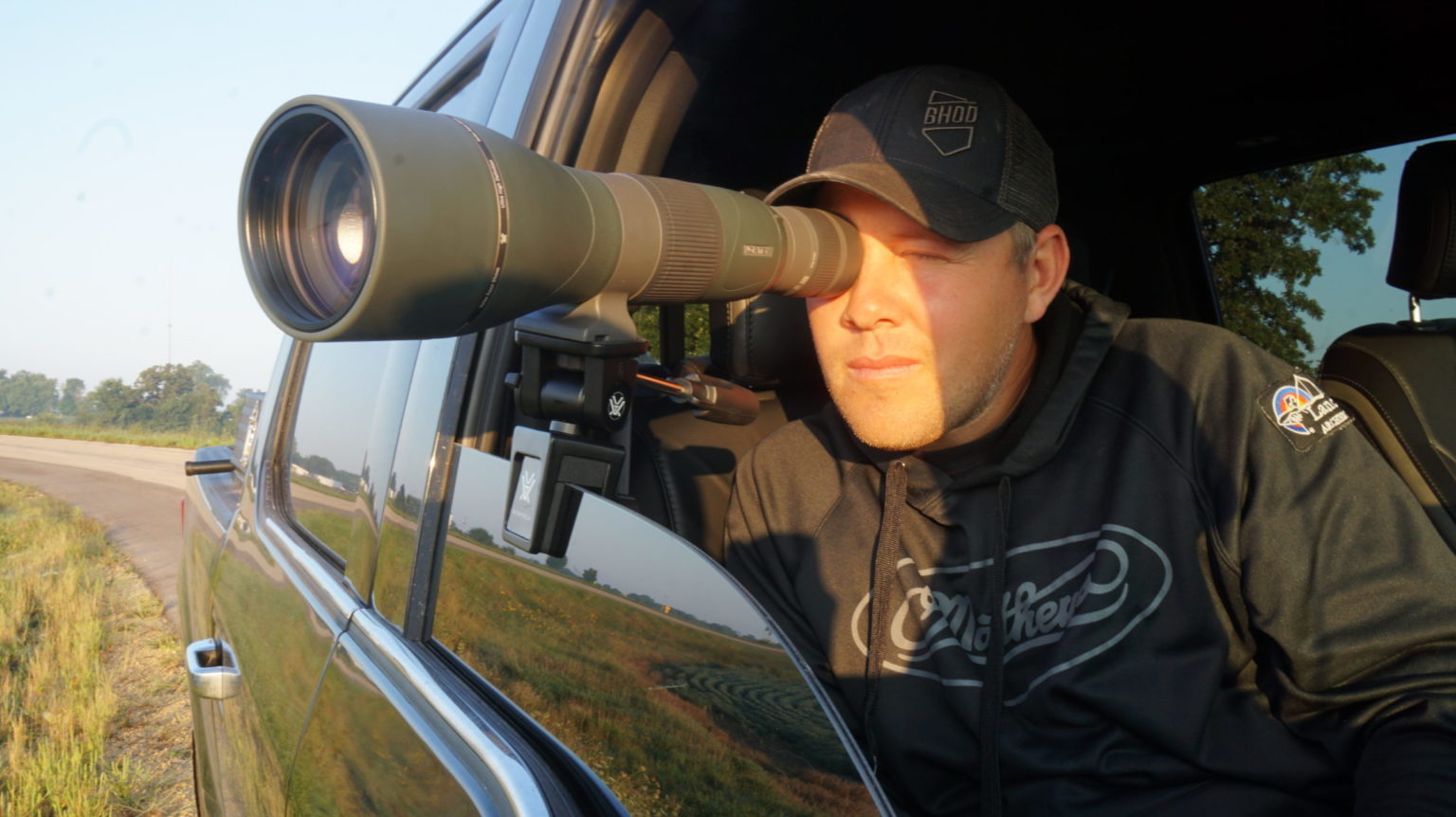
Late season deer tend to move much less during the morning than during the afternoon. One researcher found that most deer finish feeding about two hours before sunrise. They then pick their way slowly toward their bedding areas. This makes morning hunting a risky proposition when the rut is over.
Not only does their compressed range make it more difficult to get between feeding and bedding areas without being detected, some of the deer will already by bedded by daybreak. Hunting a bedding area would be a mistake at this time, and since movement is subdued, there are few other options.
Migration: I saw an interesting winter behavioral change in the wood lot country of northern Iowa where I grew up. As soon as the snow came and the temperature got bitter, the deer abandoned the wood lots and headed for creek and river drainages nearby where they concentrated.
This is the traditional behavior called “yarding”. While in Iowa it wasn’t predicated on finding a food source for survival, it was the result of the deer’s need for shelter from severe winter conditions.
Keep this mini-migration pattern in mind if you commonly hunt wood lot country. When the snow piles up and the mercury drops, don’t be surprised to find the wood lots trackless. All of a sudden, the deer will be gone and may not return for a couple of months. You’ll find them concentrated on the south facing slopes of the nearest valleys – possibly miles away.
In other parts of the north, migrations take place to historic winter yarding areas. In agricultural areas, this is not as common as it is in big woods country because there are more good food sources in farm country. You may have to do a little pre-hunt searching to find the deer before you start hunting them.
Hunting Strategies
The goal is to see a buck from the distance that you would like to shoot before you commit yourself to a feeding area. Remember, these are extremely wary deer. With the first hint of human intrusion, the buck will be back on a nocturnal pattern immediately. So you can’t bumble around.
Pay close attention to exactly how he enters the feeding area. What trail did he use? What was the wind direction? What time was it? You also want to know what all the other deer using the feeding area are doing so you can factor them into your strategy.
All of these observations are important when setting up an ambush. It would be ideal to watch for two evenings before making a move, but you can move in after just one evening of observation if you are conservative in your stand selection.
Bucks won’t use the same exact trail to enter their feeding area each day, (in fact, they don’t always come out before dark each day). Late season hunting is a waiting game; it may take three or four evenings before you see the buck again.
All the deer using the area have to remain relaxed for that entire period if this is going to work. Make sure that you can get out of the area after shooting time expires without alarming a single deer. If you can’t, you’ve committed yourself too far into the feeding area.
Mature bucks usually wait to come out last, following all the does and immature bucks. So, even if you only spook a couple of does while heading back to your vehicle, you’ve just educated his advance guard and have made it more difficult to tag the buck on future hunts.
If the weather is warm and all you see are does coming out you have three options: move to another area and keep watching, stay put and wait until it gets colder in order to get the bucks moving or start hunting deeper in the cover. The first option is a good one. The second is also good – if you have the time, but the third option carries some risk. Save it until the last few days of the season when you have nothing to lose.
Late season hunting revolves around food and weather. Combine high-energy food with cold temperatures and you have the formula for success. Keep an eye on the Weather Channel. When the rest of the world is burrowing into a pile of blankets, you should be breaking out your tree stand. Things are about to get good.
Late Season Food Sources
If you are serious about improving your late season hunting, you need to plant good food plots or pay the landowner to leave a small portion of his commercial crops as an attraction. North of the Mason-Dixon Line, your best choice is a combination of corn and soybeans. Beans don’t need as much soil moisture – in general – as corn so they are a better choice in drier climates. South of this line, a late summer planting of oats and ryegrass – the standard green field – is a better choice.
Deer numbers can affect what you plant and how you manage your food plots. In high-density areas, you must take drastic measures to produce a winter supply of grain. It does little good to plant grain plots in the spring and then watch while the deer clean them out during the summer and early fall. By winter, there is nothing left and the deer are again going elsewhere for food. In areas with high deer numbers, consider putting up some kind of fencing system to keep the deer out until mid-fall.

